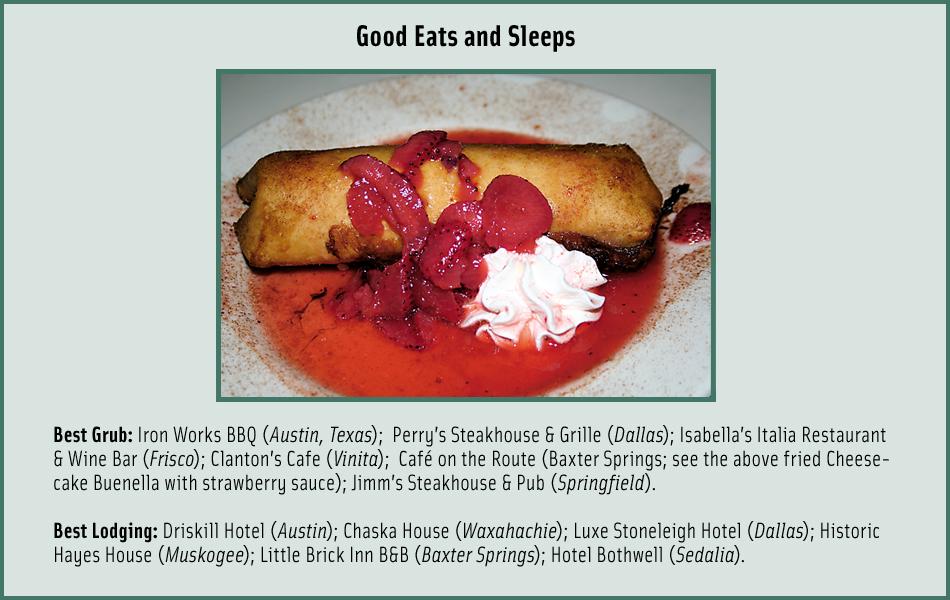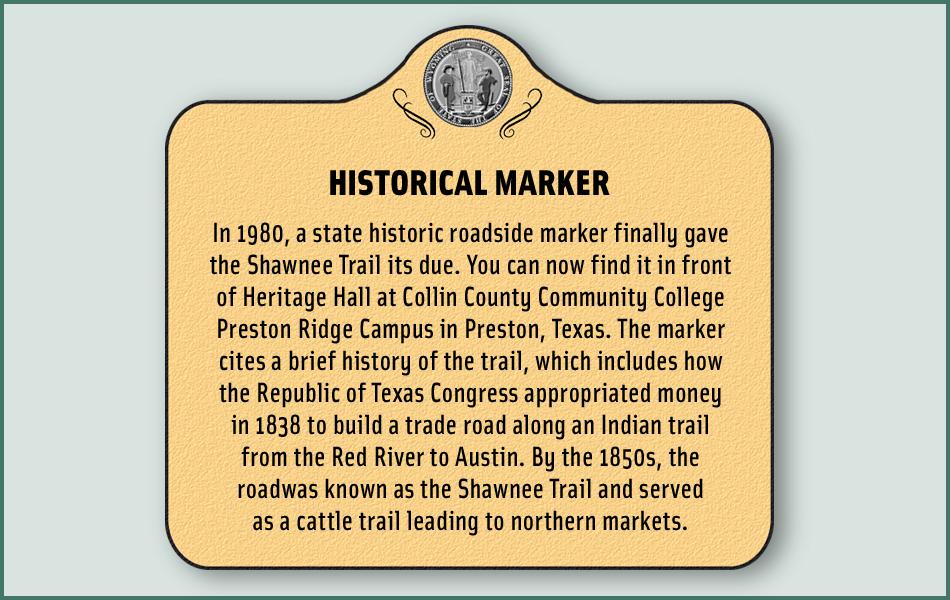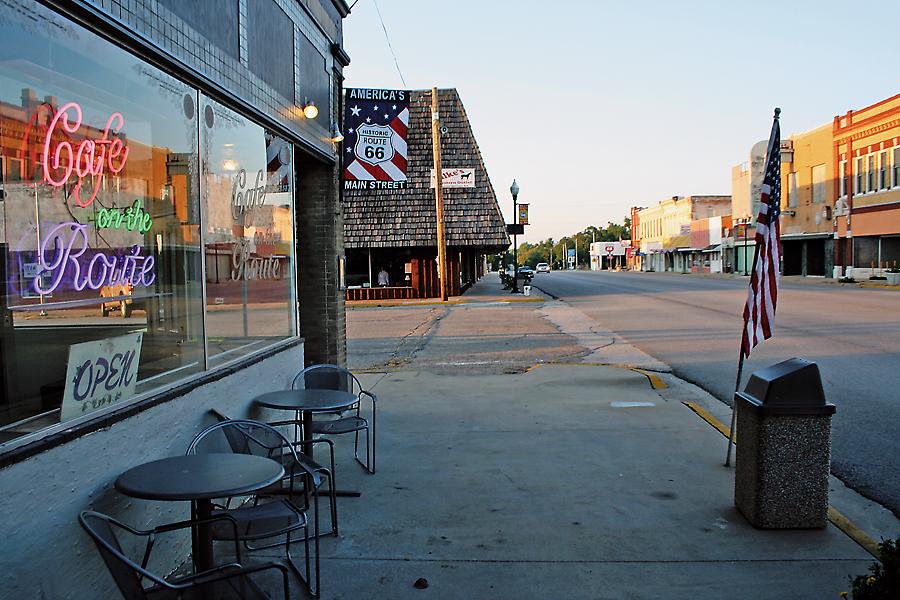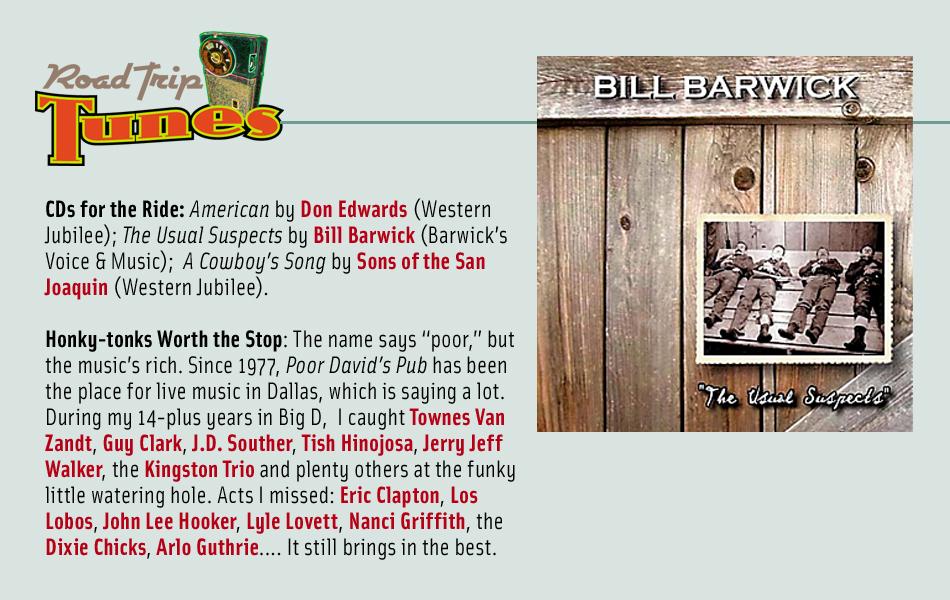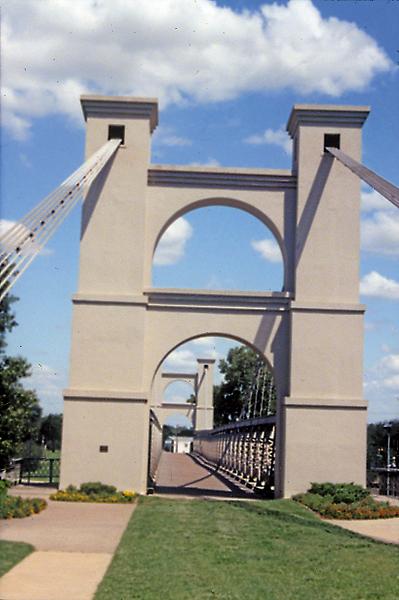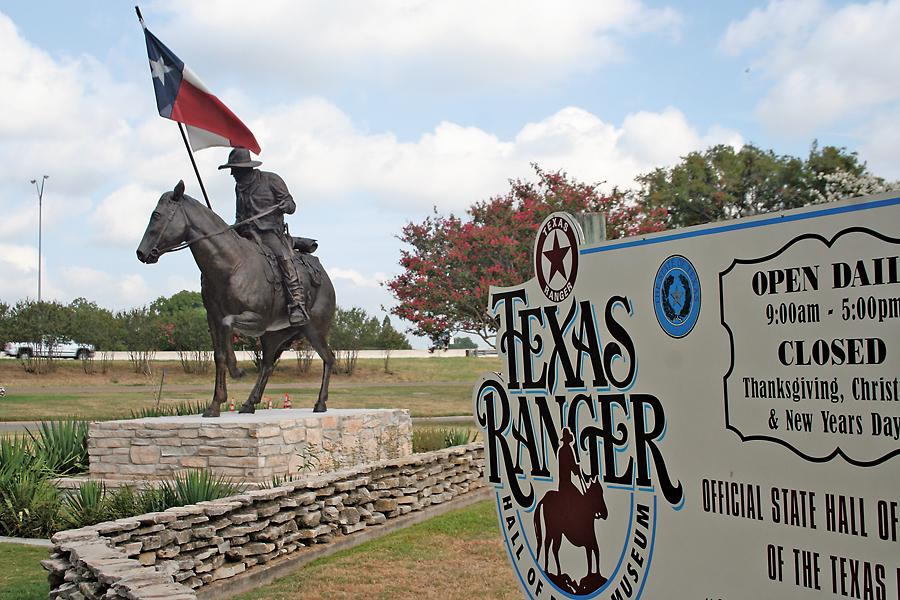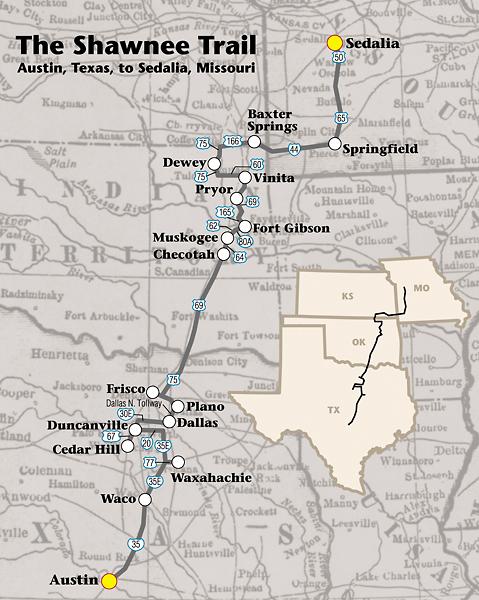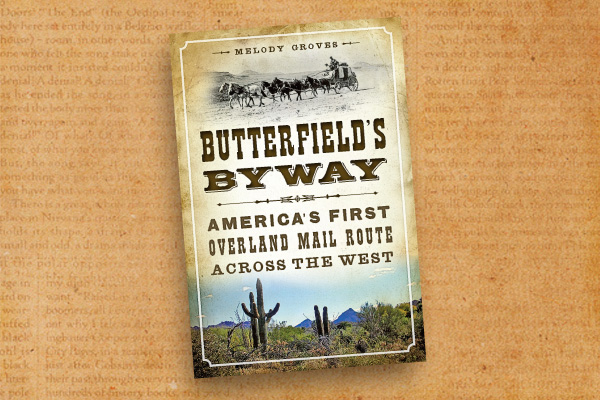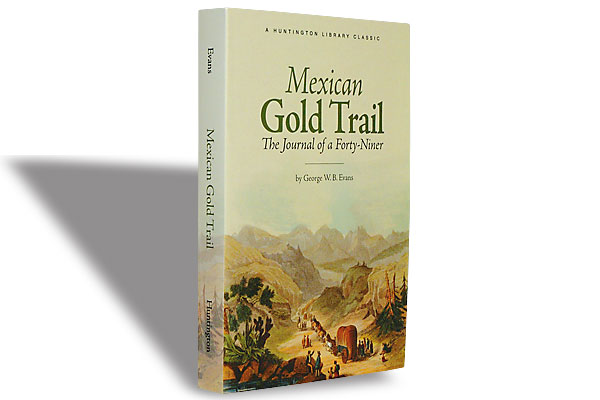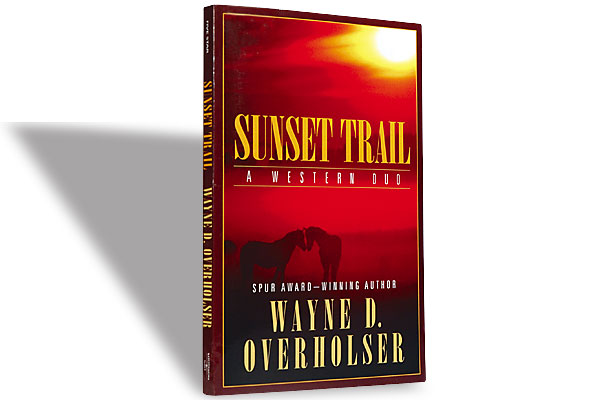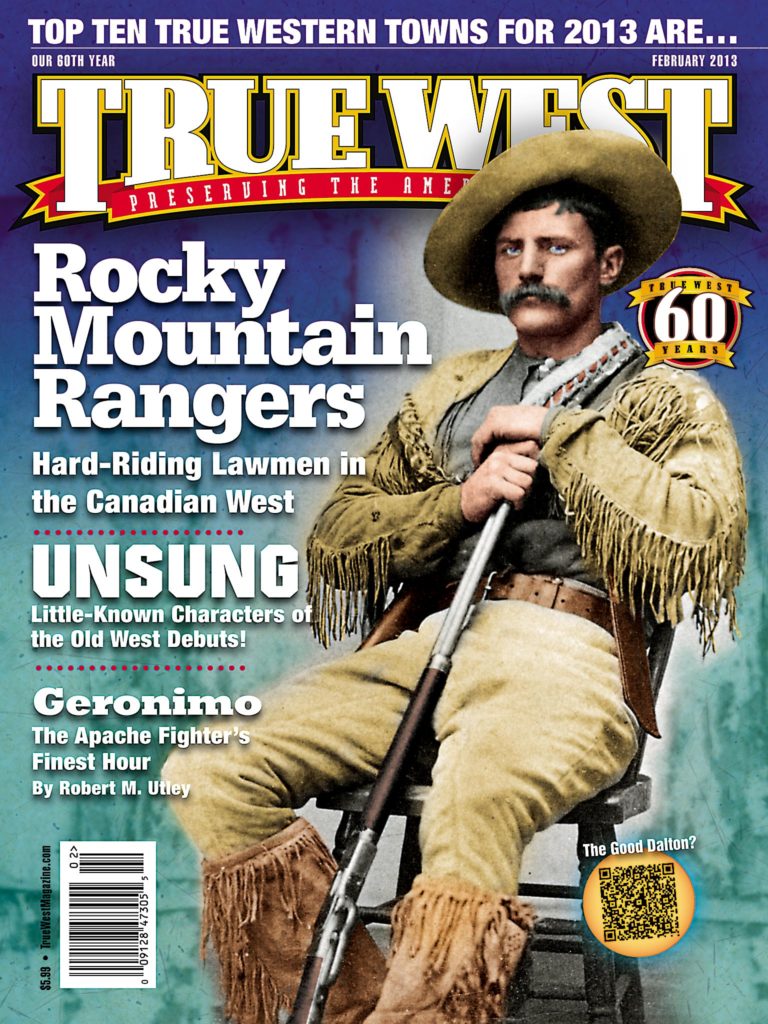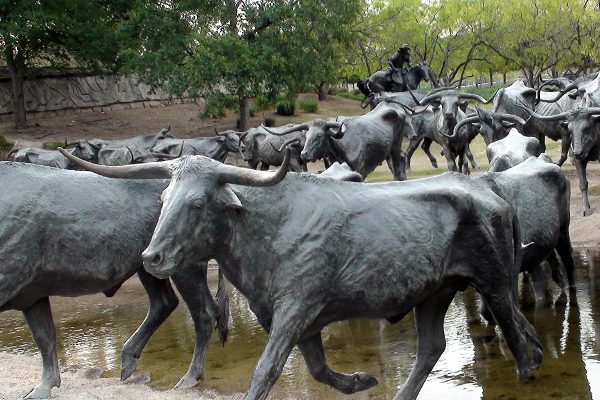 What was it John Wayne said in Red River? “Ten miles a day will be good. Fifteen will be luck.” Sounds just about right.
What was it John Wayne said in Red River? “Ten miles a day will be good. Fifteen will be luck.” Sounds just about right.
I’m inching my way toward the Dallas North Tollway on the way to Frisco, Texas, and it looks like all 1.2 million Dallasites have the same idea. I bet, however, I’m the only one with any interest in the Shawnee Trail.
Look around. Just west of Big D, the Fort Worth Stockyards relive those trail-driving years with a twice-daily cattle drive down Exchange Avenue. That’s the Chisholm Trail. Vernon is trying to get a Western Trail museum established, and you’ll find several Chisholm Trail museums, parks, festivals and markers from Texas to Kansas.
But the Shawnee Trail? You gotta look hard for that.
The trail started as an emigrant road in the 1840s. Before that, much of it had been used as an Indian trail. Folks called it the Texas Road. By the time cattlemen started using the trail, it was the Sedalia Trail, then the Kansas Trail. Some merely shortened it to “the trail.” It grew to be called the Shawnee Trail.
Unfortunately, the trail didn’t go anywhere near Shawnee, Oklahoma. Darn it. Hamburger King, I’ll have to catch you next time.
Historians aren’t certain how “Shawnee” got labeled to this trail. It could have been because of a Shawnee village south of the Red River. Or because it went around the eastern edge of the Shawnee Hills before crossing the Canadian River in present-day Oklahoma. Like many trails, it had various feeder trails and branches. You can even pick where you want to begin.
Austin City Limits
The Texas version of the trail went from the Red River to Austin, and despite Austin traffic (worse than Dallas), the best jumping-off point is the capital city. Things still get Western on Sixth Street, and you can’t beat the 1886 Driskill Hotel, but check out the Bullock Texas State History Museum. It is, as any Texan’ll brag, as big as Texas. The state history is spread over three floors, from early encounters (first floor) to the Alamo and statehood (second floor) to ranching, oil and the modern era (third floor). You can even check out The Star of Destiny, the feature presentation at the Texas Spirit Theater.
Look hard enough at the Texas State Cemetery, and you can find the graves of cattlemen as well as governors, warriors, Rangers and writers. The most famous cowboy, of course, is Tom Landry, legendary, fedora-wearing coach of the Dallas Cowboys.
From Austin, head north to Waco.
Wacky Waco
If you’re into architecture, the Historic Waco Foundation preserves area history with four house museums: the Earle-Napier-Kinnard House (circa 1858), the Fort House (1868), the East Terrace House of John Wesley Mann (1872) and the McCulloch House (originally built in 1866, then enlarged in 1872).
I think it’s a state law that any tourist in Waco must see the Texas Ranger Hall of Fame and Museum. The Rangers got their start in 1823, but 1874 was when the legend really began. That’s when the state legislature put two Ranger units—Maj, John B. Jones’s Frontier Battalion and Capt. Leander McNelly’s Special Force—into action. What did the Rangers have to do with the Shawnee Trail? Probably not much, but it’s still a great museum.
On the other hand, cattle heading up the Shawnee Trail in the latter years could have crossed the Waco Suspension Bridge. When finished in 1870, the bridge spanning the Brazos River was the longest single-span suspension bridge west of the Mississippi River. The Waco Bridge Company charged a toll (collecting about $25,000 a year), but these days you can cross the now-pedestrian-only bridge for free.
Texas’s Hollywood
One of my favorite Texas towns is Waxahachie. Gingerbread houses, crape myrtles, chicken-fried steaks and a historic downtown district.
Hollywood loves Waxahachie too. Bonnie and Clyde, Tender Mercies, Places in the Heart and The Trip to Bountiful were filmed here. Snap some photos of the circa 1895 Ellis County Courthouse and the 1908 Missouri-Kansas-Texas depot. Check out the art at the Ellis County Fine Arts Museum. Learn a little area history at the county museum. Shop for antiques. Eat good, greasy grub. But be advised that Waxahachie pays more attention to the Chisholm Trail than the Shawnee.
Big D and the ‘burbs
From here, it’s on to Duncanville, just south of Dallas. If you want to learn about something other than cowboys, stop in at the International Museum of Cultures. This isn’t about history (well, it does have an exhibit on primitive weapons), but contemporary cultures, from New Guinea and Asia and Africa and Mexico. Traveling missionaries acquired most of the exhibits, while a major temporary exhibit is featured each year.
In nearby Cedar Hill, the Penn Farm Agricultural History Center illustrates farming in the period before WWII and then highlights the shift in agriculture in the postwar years from small farming to agribusiness.
But I need to get back to the 1800s and history—and the Shawnee Trail—so it’s on to Dallas. And traffic. The Shawnee Trail did cross the Trinity River here, which is why John Neely Bryan founded a little hamlet called Dallas in 1841.
Get a taste of history in downtown at the John Neely Bryan Cabin. It’s striking to find a log cabin surrounded by skyscrapers. The cabin is a replica (the original was destroyed in a flood), and the door is locked (this is Dallas, after all), but at least this does have something to do with the Shawnee Trail. Of course, most tourists are drawn to another nearby attraction: the Sixth Floor Museum at Dealey Plaza, which covers the assassination of President John F. Kennedy here in 1963.
At least the Shawnee Trail doesn’t have as many conspiracy theories.
If you want to see unlocked buildings, head to Fair Park. Originally established in 1880, Fair Park exploded with buildings for the 1936 Texas Centennial Exposition. Owned and operated by the city, the park includes: the African American Museum, the Museum of Nature and Science and the Hall of State (the Museum
of the American Railroad is moving out of Fair Park to Frisco).
Dallas even remembers its Wild West history (keep in mind that the professional football, baseball and basketball teams are called Cowboys, Rangers and Mavericks, respectively) at Pioneer Plaza next to the Convention Center. Larger-than-life bronze steers and bronze trail drivers commemorate the trail drives along the Shawnee Trail.
The Shawnee Trail is also remembered up the road in Frisco, and I don’t mean just at the Frisco Heritage Center, an interactive living-history village of buildings. In 1980, a historical roadside marker went up on Preston Road that commemorates, yep, the Shawnee Trail. Yee-hi!
Now that we’re in the suburbs, we might as well swing over to Plano for farming culture (the Heritage Farmstead Museum) and Southfork Ranch (which looked a lot bigger on TV—not that I ever watched Dallas or cared who shot J.R.).
Oklahoma!
I’ve spent too much time in Texas.
The Shawnee Trail crossed the Red River and entered Oklahoma, so let’s head north to Checotah.
Just outside of town, you’ll find the Honey Springs Battlefield. Naturally, that has more to do with the Civil War than the Shawnee Trail, but this year marks the 150th anniversary of the battle (which the Confederates called the Affair at Elk Creek). The July 17, 1863, fight saw Cherokees and Creeks in blue fighting Cherokees and Creeks in gray. It also included a black regiment, the 1st Kansas Colored Volunteers. A re-enactment is planned this fall, but details are still being worked out.
This isn’t so much Shawnee Trail Country as it is Indian Territory, so head to Muskogee and check out the Five Civilized Tribes Museum and then over to Fort Gibson. Founded in 1824, Fort Gibson is the oldest military post in the state: 80 acres, 29 historic structures, plenty of ruins.
From here, it’s a leisurely drive on to Pryor and the Coo-Y-Yah (means “place of the huckleberries”) Museum, which showcases local history and is located in a historic Katy Railroad depot.
Next stop: Vinita, where the Eastern Trails Museum re-creates everything from a post office to a general store to a printer’s office to a doctor’s office. The Shawnee isn’t the only trail passing through Vinita. Try these on for size: Interstate 44, U.S. Highway 69, State Highway 2, U.S. Highway 60 and Route 66. No wonder folks call it “America’s Crossroads.”
If you need a cowboy fix, drive to Dewey, home of the Tom Mix Museum. Mix arrived in Dewey in the early 1900s and married a local girl (Olive Stokes, wife No. 3). Folks in these parts say Mix worked on a movie being filmed in the area, launching his movie career.
Big Times in Baxter Springs
The Shawnee Trail split in Oklahoma. Texans could push their herds to places like Baxter Springs, Kansas, or into Missouri to Sedalia, Kansas City, Westport, even St. Louis. But these days I can hit both states.
Founded in the 1850s, but not incorporated until 1868, Baxter Springs was Kansas’s first cowtown. Herds began arriving here as early as 1866, and the railroad reached here in 1870. But then the state legislature enacted yet another bill that restricted Texas cattle entering the state (the quarantine line) because of Texas Fever, which killed Kansas beef.
So Baxter Springs faded away in favor of towns like Abilene, Wichita and Dodge City. That story, and plenty of other tales, are well told at the Baxter Springs Heritage Center & Museum.
To the End of Trail
That’s enough of Kansas. But what “trail’s end” should one pick for Missouri? Kansas City? Great barbecue! St. Louis? Great baseball! Independence? Harry Truman! Westport? Uh, Kansas City annexed it in 1897. Nah, there’s only one place to go, and that’s Sedalia.
After all, that’s where John Wayne was heading in Red River, before his herd got hijacked to Abilene.
You’ll find railroad exhibits at the circa 1896 Katy Depot. Check out the art at the Daum Museum of Contemporary Art. Andy Warhol! All right! And drop in at the Pettis County Museum.
Okay, you won’t find much about the Shawnee Trail in Sedalia either. But Texas Fever quickly shut down the cattle trade here too, and maybe that’s why everyone remembers Abilene and the Chisholm Trail. Maybe that’s why you will find markers and museums galore about the Chisholm Trail, while the Shawnee fades away.
But maybe, just maybe, one of these days the Shawnee Trail will get a museum of its own.
Johnny D. Boggs’s advice is to avoid Branson, Missouri. Always. If you’re on a road trip with a destination in mind, the last thing you need is traffic.
Good Eats & Sleeps
Best Grub: Iron Works BBQ (Austin, Texas); Perry’s Steakhouse & Grille (Dallas); Isabella’s Italia Restaurant & Wine Bar (Frisco); Clanton’s Cafe (Vinita); Café on the Route (Baxter Springs; see the above fried Cheesecake Buenella with strawberry sauce); Jimm’s Steakhouse & Pub (Springfield).
Best Lodging: Driskill Hotel (Austin); Chaska House (Waxahachie); Luxe Stoneleigh Hotel (Dallas); Historic Hayes House (Muskogee); Little Brick Inn B&B (Baxter Springs); Hotel Bothwell (Sedalia).
Photo Gallery
– By Doug Sharp –
– All images by Johnny D. Boggs unless otherwise noted –


